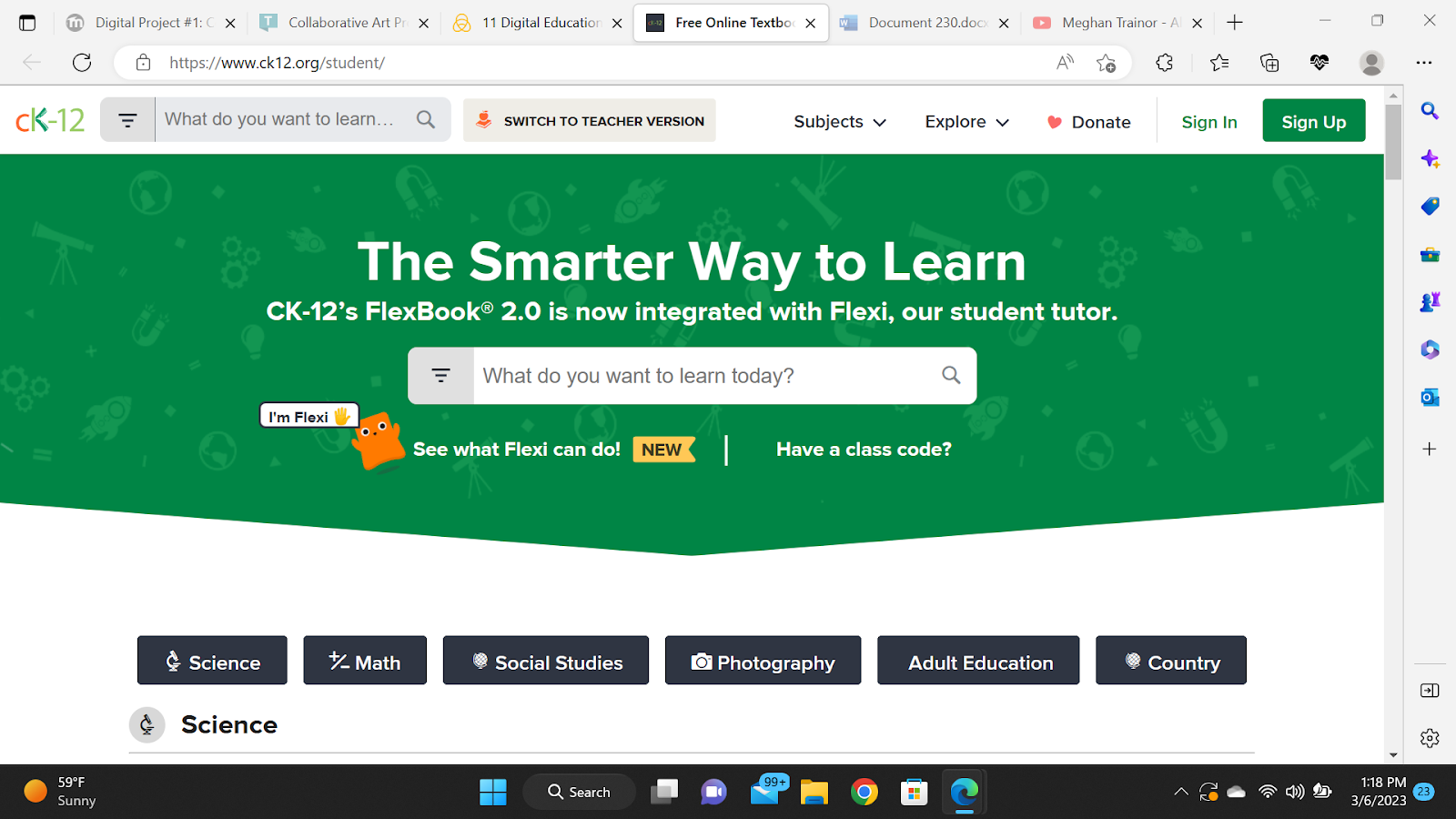Summarize the information you learned from the resources provided in this module about:
A. The process of creating and completing a Mind Map
So, after going to this website https://www.mindmeister.com/training/mind-mapping-101/9/how to-link-your-mind-maps this site explains the information on how to create a mind map. This
process was easy to be able to read all of it and create and complete a mind map.
B. Some benefits of using Mind Mapping tools in the classroom and ways that use of this tool
supports learning. Some benefits of using mind mapping will allow students to be able to take the information and
make connections by putting fewer words on a map with visuals to help students make
connections.
Using the online resource allows the students to interact with other students with
the same mind map so many students can work together at the same time though out class.
Educators can make mind maps with students on stories to learn the content, vocabulary, looking
at topics and much more. Some other examples will include math, social studies, and science. A
mind map can be used with all subjects. Mind maps help support the content that needs to be
taught and allow students to take a lot of information and make it easier to remember.
C. Some benefits of using Mind Mapping tools for work allow us to save time and improve the
quality of our work. Mind maps allow us to make connections quicker and allow us to learn
faster with more effectively. This allows us to take notes on the topic and focus more on what
needs to be addressed and what needs to be addressed first.
4. Then, share details of the process that you went through to create your Mind Map. What went
well? What did not go as planned?
Step one- I read all the information that needed to be read.
Step two- I hit create a mind map.
Step three- I chose my topic which was hard because there is so much that can be talked about
and discussed. So, I allowed my children to choose a topic together and they chose Different
types of camping.
Step four- I Put a picture of a tent in the middle and used a few words to describe several types
of camping.
Step five- Several types of camping were listed, and pictures were added whether it was a RV,
tent, or a large tent for many.
Step six- detail had to be researched to explain each of them
Step seven- details about the details were listed on some but could of keep going.
Step eight- I took a screen shot to send to you for my assignment.
Some things that were easy are the fact that I was able to notice what to do on this site easily
after reviewing the directions before making a mind map. Now if I had done that, I would have
had to take it step by step to do this assignment which was also included if needed with this site
but would have taken a lot longer to complete this assignment. Some things that would have
been a little easier would have been if the computer had saved everything but when I had clicked
on something by accident It dawned on me that I had to redo a lot of the work. The hardest part was the research but because it was a mind map it made it easier to put all the data together to
explain each type of camping.
Is mind mapping helpful for students? Why or why not?
Yes, mind mapping is helpful for students. Some reason that it is helpful for students is that this
allows students to work together on a topic or project.
Another thing that mind mapping does is that it allows students to make connections between
words and visuals.
Mind mapping helps students put research on a piece of paper without writing word for word and
still be able to apply most of the information that is needed to help make the connections.
5. When should teachers incorporate mind mapping in the classroom?
Sometimes teachers can incorporate mind maps in language arts, stories, topics, and vocabulary.
Research anything that is being discussed. Mind maps can be used to take about math
concepts, soc studies, steps in a process, science, and much more. This will also help create
creativity and help students debate on different topics in the classroom.
Ideas
A. Summarizing information
B. Taking notes.
C. Combining information from various sources.
D. Thinking through complex problems
E. Presenting information clearly
F. Studying and memorizing information
.jpg)








